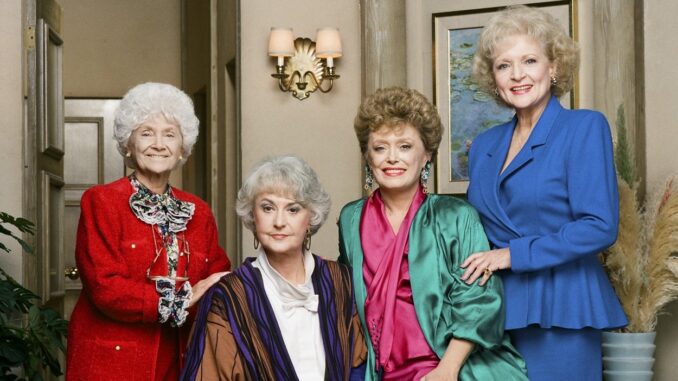
Introduction
“The Golden Girls,” which aired from 1985 to 1992, is often hailed as one of the greatest sitcoms of all time. With its sharp writing, memorable characters, and groundbreaking themes, the show transcended the typical boundaries of television comedies. This article delves into why “The Golden Girls” is considered sitcom genius, examining its unique approach to storytelling, character development, cultural impact, and enduring legacy.
Innovative Storytelling
One of the standout features of “The Golden Girls” was its innovative storytelling. The show brought together four older women—Dorothy, Rose, Blanche, and Sophia—who lived together in Miami, defying the conventional portrayal of older adults in media. Instead of focusing solely on their age-related challenges, the series explored a wide range of topics, including friendship, love, sexuality, and personal growth.
The writers adeptly balanced humor with poignant moments, allowing the characters to experience both laughter and heartache. This blend created a rich narrative tapestry that resonated with audiences of all ages. Each episode often tackled serious issues such as health problems, grief, and family dynamics, making the characters’ experiences relatable and authentic.
Memorable Characters
The genius of “The Golden Girls” lies significantly in its well-drawn characters. Each woman brought distinct personalities and perspectives, contributing to the show’s dynamic.
- Dorothy Zbornak, portrayed by Bea Arthur, is the sharp-tongued, no-nonsense teacher with a quick wit. Her sarcasm and intelligence often served as the voice of reason among her friends, while also highlighting the struggles of being a single woman in her 50s.
- Rose Nylund, played by Betty White, is the naive yet endearing character whose childlike innocence often led to humorous misunderstandings. Her integration of stories from her hometown of St. Olaf added a unique charm and comedic flair.
- Blanche Devereaux, portrayed by Rue McClanahan, is the glamorous Southern belle with a vibrant love life. Her unabashed sexuality and confidence challenged societal norms about aging and femininity, making her a trailblazer on television.
- Sophia Petrillo, played by Estelle Getty, is the witty matriarch whose sharp remarks often stole the show. Her humorous anecdotes and clever comebacks provided not only comic relief but also a deeper understanding of family and heritage.
The chemistry between these characters was palpable, allowing for memorable interactions that resonated with viewers. Their friendships, marked by love, support, and occasional conflict, depicted a realistic portrayal of relationships among women.
Breaking Taboos
“The Golden Girls” broke new ground by addressing taboo subjects often overlooked in mainstream media. The show tackled issues like aging, sexuality, and mental health with honesty and humor.
For instance, it openly discussed topics such as menopause, safe sex, and even the challenges of dating in later life. This fearless approach not only educated viewers but also fostered a sense of acceptance and understanding around these issues. In doing so, the show empowered older women to embrace their lives fully, challenging the stigma often associated with aging.
Cultural Impact
The cultural impact of “The Golden Girls” cannot be overstated. The series resonated with a diverse audience, transcending age and gender. It provided representation for older women in a time when they were often marginalized in media. The characters’ relatable struggles and triumphs fostered connection and empathy among viewers.
The show also highlighted the importance of female friendships, portraying them as essential sources of support and joy. This emphasis on camaraderie among women contributed to shifting societal perceptions about aging and the roles of women in society.
Additionally, “The Golden Girls” became a cultural touchstone, inspiring various spin-offs, merchandise, and even academic studies. The show’s themes and characters continue to influence contemporary television, paving the way for more inclusive representations of older adults.
Timeless Humor
At the core of “The Golden Girls” is its timeless humor. The writing is sharp, witty, and often laced with double entendres. The comedic timing of the cast, combined with the clever scripts, created moments that remain iconic.
Many memorable quotes and catchphrases from the show have entered the lexicon of pop culture. Lines like “Thank you for being a friend” and “Picture it, Sicily…” resonate deeply, evoking nostalgia and laughter among fans. The humor often stemmed from the characters’ interactions and the absurdity of their situations, making it relatable and enjoyable.
The show’s ability to tackle serious subjects while maintaining a comedic tone is a testament to its brilliance. It invited viewers to laugh while also confronting real-life challenges, creating a unique viewing experience that was both entertaining and thought-provoking.
Enduring Legacy
Even decades after its original airing, “The Golden Girls” continues to captivate audiences. Its reruns remain popular, introducing new generations to the show’s charm and wisdom. The themes of friendship, empowerment, and resilience resonate just as strongly today, making the series relevant in contemporary discourse.
The revival of interest in the show has led to various tributes, merchandise, and even themed events, further solidifying its place in popular culture. Fans celebrate “The Golden Girls” through social media, fan clubs, and conventions, showcasing the enduring love for these characters and their stories.
Conclusion
“The Golden Girls” stands as a testament to the power of storytelling in television. Its innovative approach to humor, character development, and cultural commentary set a new standard for sitcoms. By breaking taboos and addressing important issues with grace and wit, the show not only entertained but also enlightened its audience.
The legacy of “The Golden Girls” endures, reminding us of the importance of friendship, laughter, and embracing life at any age. Its brilliance lies not only in its humor but also in its ability to connect with viewers on a profound level, making it a true masterpiece of television history. As long as there are fans who cherish these golden moments, the spirit of “The Golden Girls” will continue to shine brightly.
